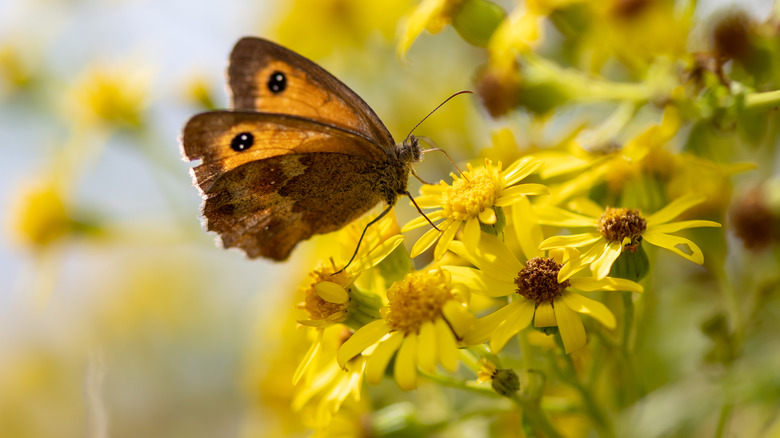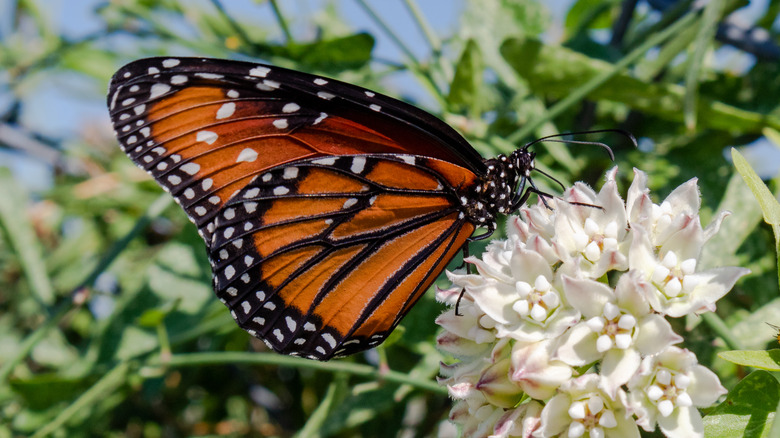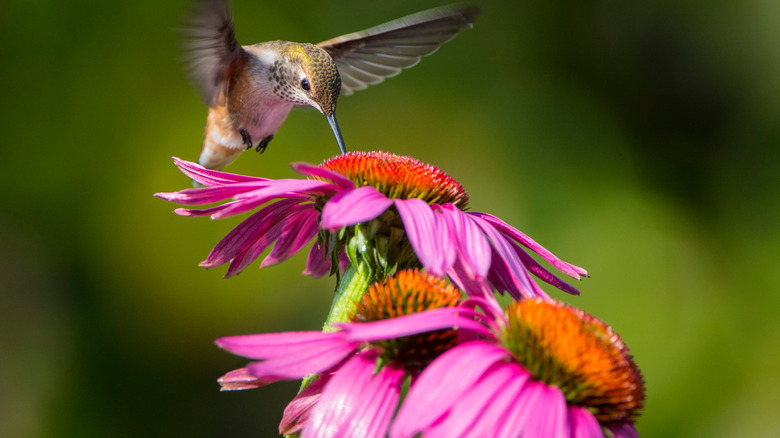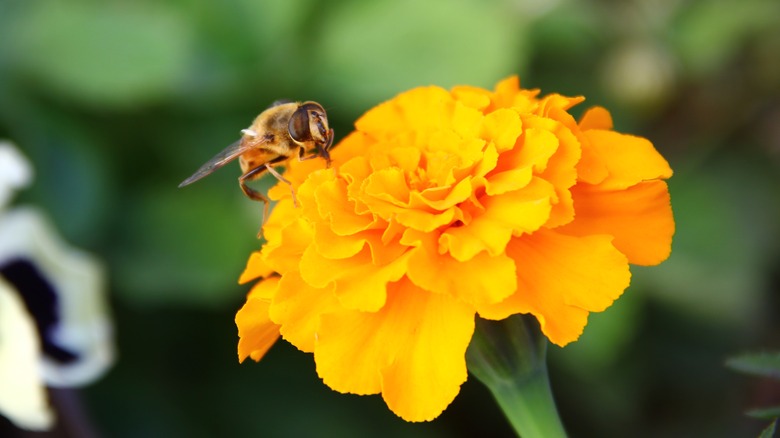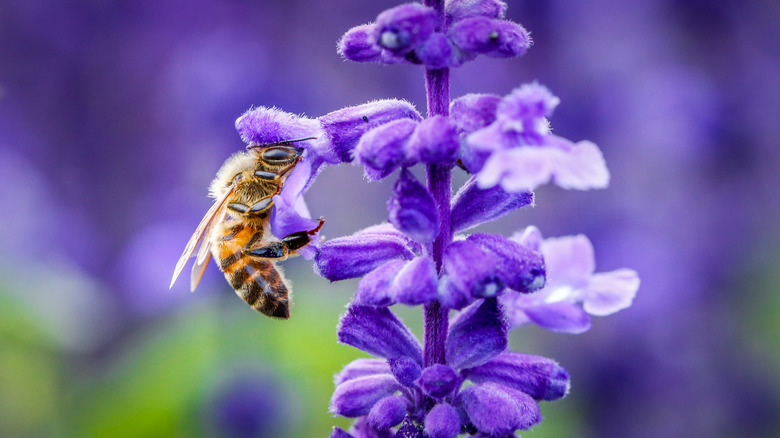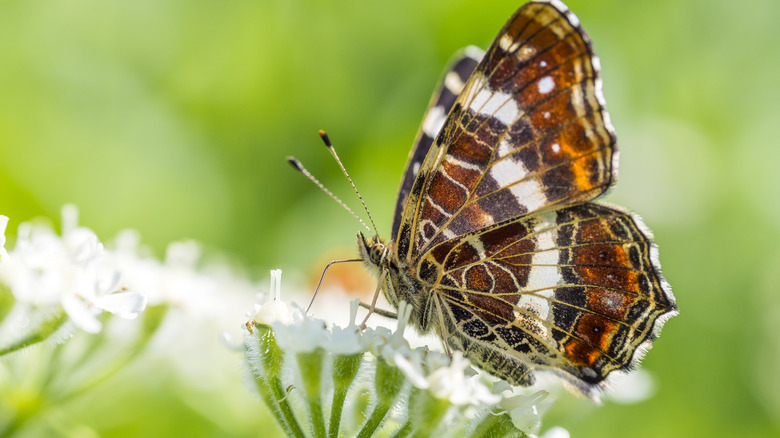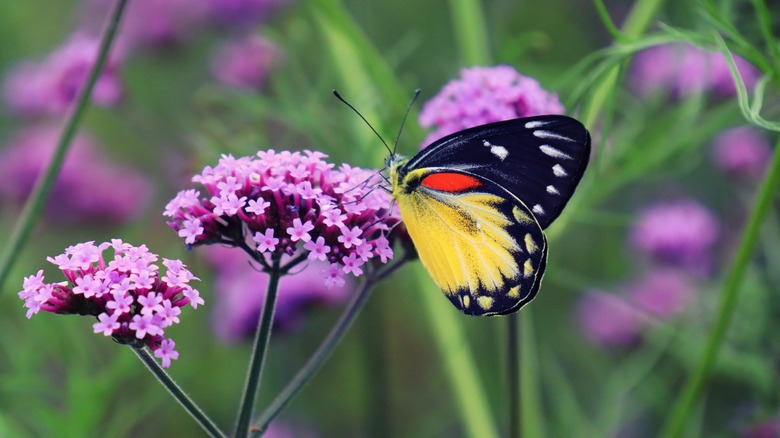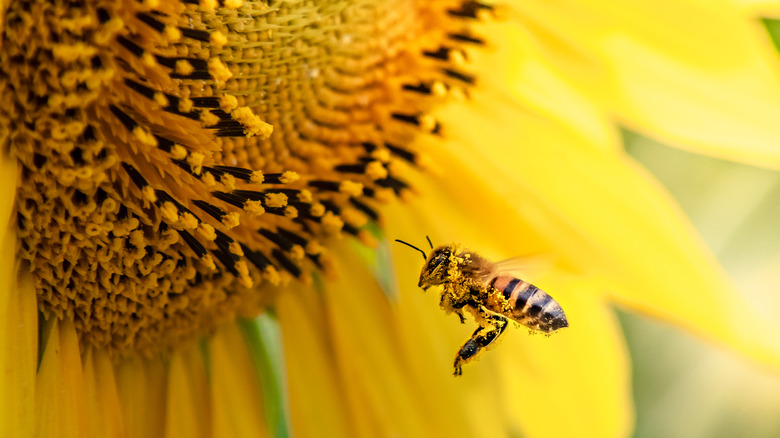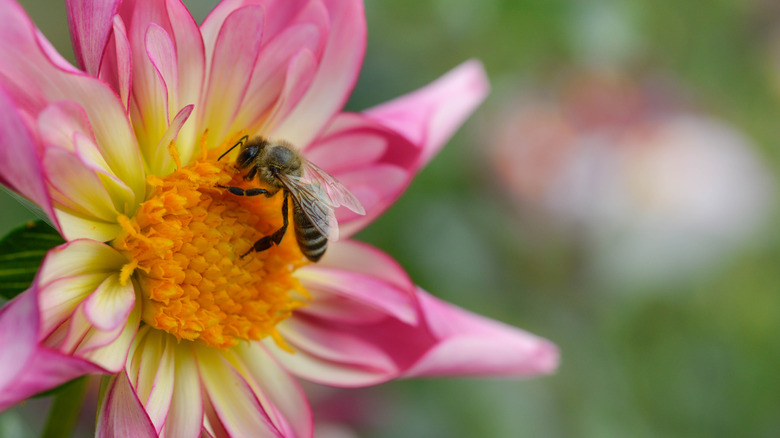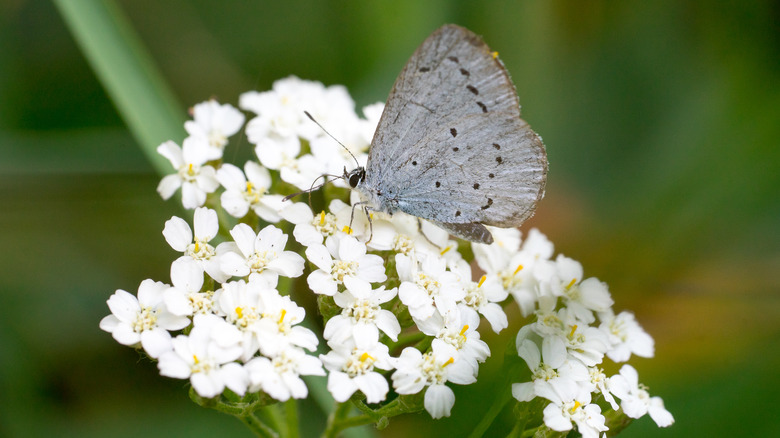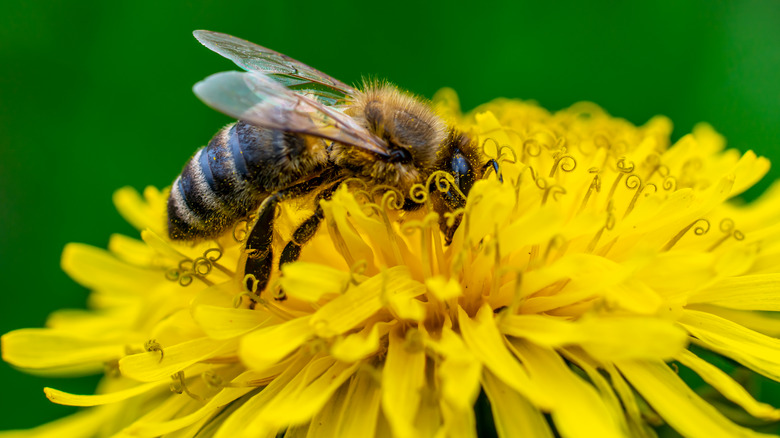10 Best Plants For Your Pollinator Garden
Many gardeners and environmental activists have been advocating for people to grow pollinator gardens, which are meant to foster and aid the local pollinator population (via The Spruce). People are usually referring to bees, butterflies, and birds when they say pollinators, but the term includes any animal that transfers pollen from one plant to another to encourage growth and includes moths, wasps, bats, and other small mammals.
With rapid urbanization, many pollinators are becoming displaced and dying off at pretty alarming rates, which can be catastrophic for the environment. Many are taking matters into their own hands by turning their backyard into a haven for local pollen-movers, planting flowers that will attract them, and encouraging them to pollinate abundantly. Pollinator gardens should be cultivated with your local environment and ecosystem in mind and should be primarily made up of native or wild plants, as well as non-invasive plants. Be sure they don't attract invasive pests or animals, too. With that being said, there are quite a few plants every pollinator garden can benefit from.
1. Milkweed
Asclepias, or milkweed, is literally nicknamed butterfly weed due to how attracted butterflies are to it (via Gardenia). It can come in a variety of shades and species and is also a favorite among other pollinators like bees and hummingbirds. They are also pest-free and deer resistant. There are many varieties of this plant, so consult a local garden center, wildlife expert, etc., to find which will be most beneficial to your locality, and fit best into your pollinator garden. Generally, they prefer full sun and are quite low maintenance.
2. Coneflower
Another attractive flower great for pollinator gardens is the coneflower (echinacea), according to Gardener's Path. The flower comes in various colors, including purple, pink, red, orange, white, yellow, and green, and mainly attracts bees and butterflies. The perennial also has many varieties, ranging from USDA hardiness zones 3 through 9, and grows anywhere from 2 to 5 feet tall. They're also great flowers for using in floral arrangements once the local pollinators have gotten what they need.
3. Marigold
The golden yellow marigold, belonging to the tagetes genus, is a great flower to add to your pollinator garden, recommends Homestead and Chill. Marigolds are most commonly grown as annuals, but they can be grown as perennials in USDA hardiness zones 10 and up. They attract mostly butterflies and moths, but other pollinators will certainly flock to this bright yellow flower as well. They generally prefer warm weather and full sun and prefer consistently moist soil.
4. Lavender
According to Bob Vila, the fragrant purple lavender is a great addition to your pollinator garden as the plant has both pollen and nectar. This makes it particularly attractive to bees. As a bonus, it tends to bloom in a gap in the summer when bees don't have a lot of plants to pollinate from or feed on. Lavender is a perennial that can grow in USDA hardiness zones 5 through 9 and can reach up to 3 feet in height (via The Spruce). Despite the delicate purple flowers, lavender is actually an herb, and certain species are edible.
5. Cow parsnip
Gardener's Path recommends the cloud-shaped, white cow parsnip (Heracleum maximum) for pollinator gardens. The plant is actually a member of the carrot family, notes Gardening Know How, growing best in USDA hardiness zones 3 through 9 and preferring moist and shady growing conditions. Be careful, as cow parsnip is known for causing contact dermatitis for many, the plant's sap causing itchy, bumping skin rashes. Handle the plant with gloves and wash your hands thoroughly after touching it.
6. Verbena
Verbena, or verbena officinalis, is a flowering plant that is most commonly found in purple, blue, and pink but can also be found in white and red, according to Better Homes & Gardens. They are mostly grown as annuals, but can be grown as perennials in USDA hardiness zones 7 through 11, notes Homestead and Chill. Verbenas are primarily known for attracting butterflies, specifically the monarch butterfly. In addition, they have also been known to attract hummingbirds.
7. Sunflower
Bees, specifically honeybees, are huge fans of the iconic sunflower, the buzzing insects finding plenty of nectar in the flower's center, Monrovia notes. Sunflowers can be found at almost any garden center in the summer and fall during their blooming season. Sunflowers grow as hardy perennials in USDA hardiness zones 4 through 9, but different varieties may be acclimated to different environments (via American Meadows). As they grow, the yellow flowers will stretch towards the sun, some species growing up to 8 feet tall.
8. Dahlia
Dahlias make for an excellent addition to your pollinator garden. Still, Gardener's Path warns that you have to choose the right variety — some types have petals that are too close together to let bees or butterflies successfully pollinate. Simple, basic dahlias are ideal. According to Almanac, dahlias generally only grow as perennials in USDA hardiness zones 8 through 11, but some species can remain winter hardy as low as zone 6. They generally grow anywhere from 4 to 5 feet tall.
9. Yarrow
Yarrow, also known as achillea, is known to attract butterflies and bees with its white, puffy flowers. Homestead and Chill writes that the plant is considered a biodynamic accumulator, which means its tissue stores a lot of nutrients. As such, dead or dying yarrow makes for a great addition to compost. They grow as hardy perennials in USDA hardiness zones 3 through 10, making them ideal for various climates and conditions. They generally prefer hot and dry weather conditions and grow up to 3 feet tall.
10. Dandelion
This flower is probably the easiest to find and grow. In fact, you likely already have some in your yard. That is the humble dandelion, which Gardener's Path states is a favorite among bees. You don't need much to grow dandelions, as they tend to grow wildly and natively in most people's backyards and are often written off as weeds. Dandelion seeds can also be purchased and grown manually.
